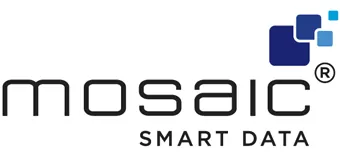Steps Ahead
The FICC industry desperately needs a new generation of collaboration tools
The pandemic changed everything when it comes to collaboration – remote working became normalised and teams needed to be able to collaborate digitally, efficiently and effectively.
Now, in the FICC industry specifically, the pressure has never been higher on sales and trading desks to focus on short term results while evolving a more digital and ‘fully tooled’ business for tactical and strategic gain.
This is the final paper in a series of four, addressing the key pain points experienced by banks’ FICC desks in today’s operating environment.
By Matthew Hodgson, CEO, Mosaic Smart Data
Learning from the COVID era
The learnings from the COVID-19 era have ushered in an increasing demand for a new generation of collaboration tools amongst financial services professionals. At the heart of this is the need for institutions to get a holistic view of their transaction data and for different teams to be able to gain actionable intelligence from it.
The implications of this are threefold. Traders need real-time data so they can be as informed as possible when pricing a client; sales need an off-the-shelf solution for quick access to data to drive deeper client conversations and highly personalised engagement; and business heads need tools to measure and compare performance across clients, trades, desks or asset classes.
As the threat of recession looms ever greater, the productivity benefits of improving collaboration will become a major competitive differentiator for banks. Discussing the importance of customer-centricity for banks keen to gain market share, a recent study by KPMG stated that:
“Because customer interactions require collaboration across multiple departments, a lack of alignment between front, middle and back-office functions and systems adds complexity and slows down the engagement process. This fragmentation could sabotage otherwise successful customer journeys and hold back operational efficiencies, prolonging or exacerbating customer issues or even introducing errors in how cases are managed.
“By re-engineering enterprise technology and breaking down silos between departments, companies can help improve the customer experience. Dedication to designing new ways of working to nurture seamless internal collaboration has become a key differentiator between businesses in today’s landscape.”
But what tools can help banks achieve the holy grail of true collaboration? In research conducted by MIT Sloan Management Review and Boston Consulting Group, more than three quarters (78%) of respondents reported improved collaboration within teams as a result of deploying a strong data strategy and use of AI.
Understanding the benefits of collaboration
The benefits of collaboration extend across the company, its chosen vendor and customers.
Firstly, let’s look at collaboration between a bank and a proven data analytics vendor across all trading venues – electronic and voice. This can be a true bilateral relationship where the vendor plays a collaborative and supportive role and helps companies and desks advance and accelerate their existing agendas. The bank point of contact works with the vendor to corral a mini team of mixed roles to champion adoption in-house.
Of course, the vendor must work with the bank’s IT team to speed up the data strategy with a thorough implementation analysis, or IA, which helps produce benchmarking and a best practice plan of action. The end result is one database for multiple asset classes using the best of class data models – a fast and cost effective route to market.
This also helps circumnavigate the issue of data management teams and quants spending time on cleaning data instead of applying data to generate alpha or learning. The right vendor can provide clean data and advanced analytics that they can build on to focus on their core roles.
This is an important consideration against the backdrop of a widespread talent shortage, which is the number one challenge complicating the adoption of digital technologies, according to KPMG. Finding individuals who hold the required depth in technical knowledge and business understanding to implement digital tools in a sophisticated manner has become increasingly challenging. Partnering with the right vendor can be a solution to this challenge.
What are the biggest challenges you face in your adoption of new digital technologies?
Secondly, collaboration between the bank’s sales and trading desks and across global departments ensures everyone has the same, standardised view of transaction data and delivers greater transparency and consistency. Many banks are moving to multi-asset sales and customer contact – one platform like Mosaic can help this change management, leading to greater increase in productivity and customer satisfaction.
Last but certainly not least, collaboration between a FICC desk and its clients and trading venues is enabled by achieving greater insights from transaction data and being able to suggest appropriate trade ideas at the appropriate time. This helps clients become more profitable and improves the strength of the relationship, improves trading venue management and performance and reduces fees if proactively managed.
Ultimately, the right set of data-driven collaboration tools delivered by a specialist partner can enhance productivity, maximise the output of a bank’s transactional data, and make sure the business strategy is supported with FICC and data science expertise.






